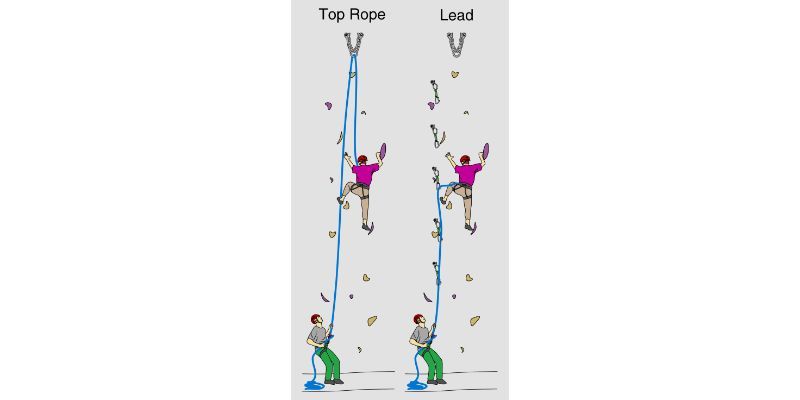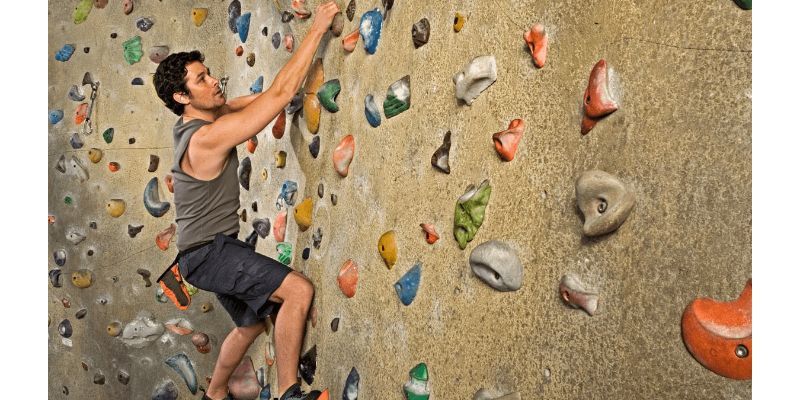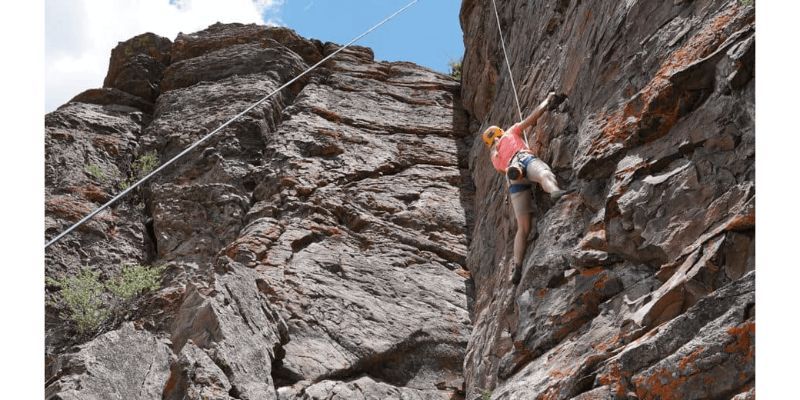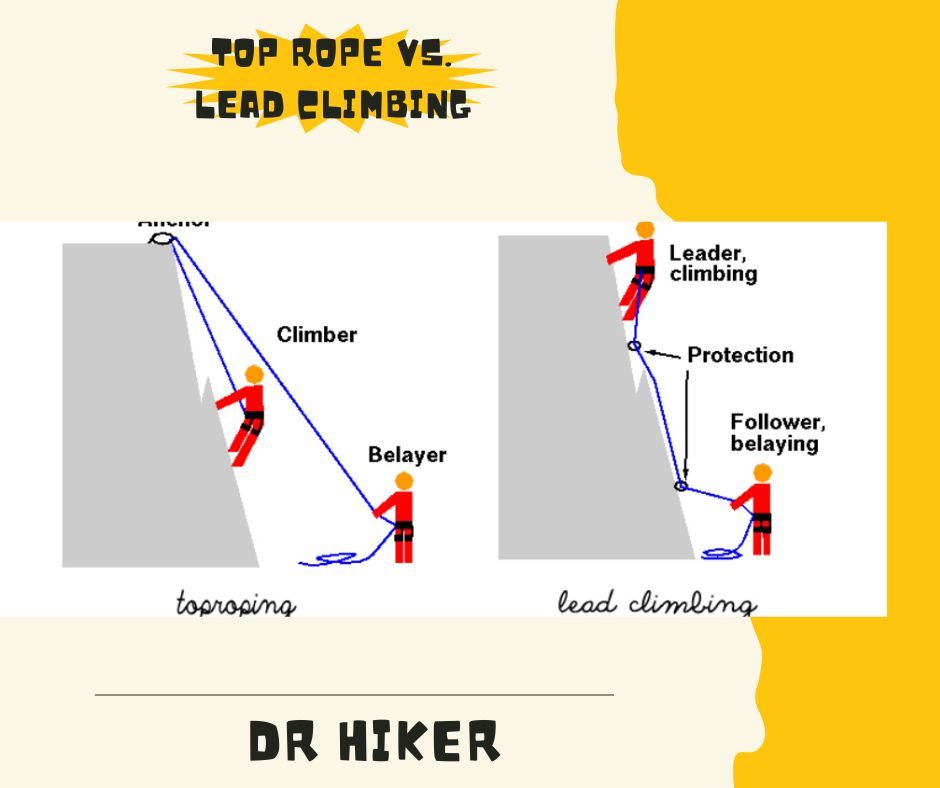But which one should you choose? Trying them out and seeing which one you prefer is the best way to decide which one is the best for you. If you're starting, we have compiled a precise guide for you.
Top Rope Vs. Lead Climbing - How Do They Differ?
Top rope climbing is, as the name suggests when you climb using a rope anchored at the top. It is the most popular type of climbing because it's relatively safe and easy to learn.
Lead climbing is a bit more advanced and involves clipping your rope into quickdraws as you go up. This type of climbing is more challenging but also more dangerous.
Before moving on with any type, you should learn the pros and cons of that particular climbing type. Let's explore the difference between these kinds of rock climbing.
If you're health-conscious and confused about how many miles you can hike daily, this guide is for you.
Difference Between Top Rope and Lead Climbing

So you're thinking of giving climbing a try. Awesome! But you might wonder how rope and lead climbing differ.
Top rope climbing is when you're attached to the rope at the top of the climb. It means your partner can safely belay you from below, and the rope will catch you if you fall.
Lead climbing is when you're attached to the rope only at the very beginning of the climb. It means you have to clip your rope into the anchors as you go, which can be a little scary but also a lot more exciting.
Best Climbing Routine for Beginners

So you're thinking of picking up climbing as a hobby? Great choice! But before you head to the rock gym, you will have to decide the climbing type, i.e., lead climb or top rope.
Top rope climbing is where you're attached to a rope that's anchored at the top of the climb. It is the easiest way to get started because you don't have to worry about clipping your carabiners into the anchors as you go. All you will have to do is focus on making your way up the wall.
Lead climbing is more advanced and can be a lot more challenging, but it's also a lot more rewarding. You're in charge of clipping your carabiners into the anchors as you go, which means you must be constantly aware of your surroundings and ensure you're safe.
So which one is better for beginners? It depends on your skill level and how comfortable you feel with taking risks. If you're starting, I would recommend top rope climbing. But once you've mastered the basics, I would encourage you to try lead climbing. You won't regret it!
Advantages of Top Rope Climbing

So what are the benefits of top rope climbing? For starters, it's one of the safest ways to climb. With a top rope, you're always connected to the rope's safety, which means you're less likely to fall.
Top rope climbing is also a great way to learn the basics of climbing. You can try different practices without falling and take your time learning the ropes (literally).
Plus, it's a great way to build strength and endurance. Top rope climbing is a good way to improve your climbing skills.
Visit Our Blog: How to Tell if the Tick Head is Still in the Skin?
Advantages of Lead Climbing

Let's talk about the benefits of lead climbing. You're in complete control of your route when you're lead climbing. You're the one who decides where to go, and this gives you a feeling of empowerment and mastery that you don't get with top rope climbing.
Disadvantages of Top Rope Climbing
There are some disadvantages of top rope climbing.
For one, it's a lot less challenging than lead climbing. When you're lead climbing, you're climbing the wall intending to fall. It is what makes rope climbing more challenging—and more dangerous.
Second, top rope climbing can be a bit boring. There's not as much of a sense of adventure or risk involved, which is why many climbers prefer lead climbing.

Disadvantages of Lead Climbing
You might be wondering what the disadvantages of lead climbing are. Let's take a look.
The first disadvantage is that it's more dangerous. You rely on your gear to keep you safe when you're lead climbing. If something goes wrong, you're in a lot of trouble.
The second disadvantage is that it's more technical. You need to know how to place gear correctly, and you need to be confident in your abilities as a climber. If you make a mistake, it could be disastrous.
The third disadvantage is that it's more expensive. You need more gear when you're lead climbing; if something goes wrong, you could replace all your gear.
So these are the three main disadvantages of lead climbing. Do you still want to give it a try?
Whatever climbing type you decide, ensure it fits your skills and preferences best. You are the only person to weigh each type's possible pros and cons, so choose anyone wisely!
Get unique ideas about what to wear on a hiking date in our guide.
Conclusion
One should consider different important factors before choosing between the top rope and lead climbing. Both have pros and cons, but your choice depends on your likings and preferences.
Lead climbing is more dangerous but thrilling, allowing you to climb higher and explore more challenging routes. Top rope climbing is safer but can be a bit more boring, and it's a good option if you're new to the sport.
Think about what you want from your climbing experience, and then decide which type of climbing is right for you. Whichever you choose, take the necessary safety precautions to stay safe while you're up in the mountains.
Related Posts:









